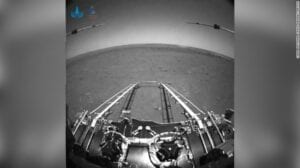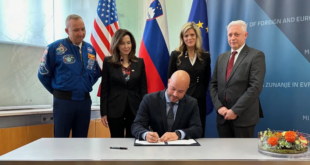by Blaine Curcio and Jean Deville
 As part of the partnership between SpaceWatch.Global and Orbital Gateway Consulting we have been granted permission to publish selected articles and texts. We are pleased to present “Dongfang Hour China Aerospace News Roundup 17 May – 23 May 2021”.
As part of the partnership between SpaceWatch.Global and Orbital Gateway Consulting we have been granted permission to publish selected articles and texts. We are pleased to present “Dongfang Hour China Aerospace News Roundup 17 May – 23 May 2021”.
Hello and welcome to another episode of the Dongfang Hour China Aero/Space News Roundup! A special shout-out to our friends at GoTaikonauts!, and at SpaceWatch.Global, both excellent sources of space industry news. In particular, we suggest checking out GoTaikonauts! long-form China reporting, as well as the Space Cafe series from SpaceWatch.Global. Without further ado, the news update from the week of 17 May – 23 May 2021.
1) Another Fruitful Week for China’s Space Exploration Program
Jean’s Take
As sort of a follow-up to the successful landing of China’s Zhurong lander/rover on the Martian soil last week, this week we saw Zhurong send back the very first images to Earth.

First of all, let’s view the two images that Zhurong sent back.
- The first image comes from the hazard avoidance camera, at the front of the rover. The image is in black and white, probably because the goal of the camera is obstacle avoidance so there is no need for color, and the resulting image gets a better resolution due to the absence of a Bayer filter which is what gives the color info.
For hazard avoidance, you obviously want to have as wide a view as possible, and this is visible on the image: you see that a lot of the surroundings is squeezed into the image, with resulting image distortion visible over straight lines (such as the horizon), similar to what you would have with a GoPro. You can remove this lens distortion with some image editing software like Photoshop (see picture), showing a very flat terrain in Utopia Planitia, the area where Zhurong landed.
You can also see the low frequency ground penetrating radar antennas, and part of the RoSPR instrument. The idea here is that the radar emits RF waves into the ground, and the reflection of the waves from the underground surface provide data that, processed correctly, can give an indication of the martian underground structure and composition.
Finally, you can also see the skinny little ramps which Zhurong rides on to definitely drive off and leave the lander. - The second image comes from the navigation camera, situated on the fore mast, and pointing here at the rear of the rover. We can clearly see the two rear deployable solar panels which have deployed correctly. It’s not exactly visible on this image, but the solar panels of Zhurong are much larger than those of the Yutu rovers, despite being of similar scale. The main reason being the farther distance of Mars from the sun, and also martian dust reducing the effectiveness of the solar panel. Back to the picture now, you can also see the high gain antenna. And the image is a color image! Good stuff.
As a bonus, there were also two bonus low-frame rate videos showing the separation of the landing capsule (containing the rover and lander) from the Tianwen-1 orbiter.
Worth noting, even if Zhurong had landed successfully on the 16th of May, it took the CNSA 4 days to publish the first images (on the 19th of May). Why did it take so long?
The main reason is that it’s actually not quite easy to send data back to the Earth. First of all, a quick run-down of how the rover communicates:
- There’s direct communication, using the rover’s steerable high-gain antenna. The signal is in X band, and as can be expected from such a small antenna and limited power, the data speed is very low at 16 bps. You add to that the fact that Mars rotates, meaning that it has a daily window of less than 30 minutes to communicate with the Earth, and you understand why this method is only used to transfer rover status info and not images.
- There’s also indirect communication, through a relay satellite (the Tianwen-1 orbiter). This is the main means of communication to send back data. Yet this is not continuous communications: the orbiter is in a highly elliptical orbit of 265 km x 15 000 km, with a period of 8.2 hours, and it only communicates when there is a direct fly-over. This occurs about once a day during a time slot of 8-10 minutes, where the rover is able to upload about 20 Mb in UHF frequency. And every 3 days, due to power restrictions, the rover is able to upload a bit more data in X band, around 50 Mb, at a speed of 32 kbit/s.
When you consider that there were likely more critical data to send back to Earth in the early stages following the landing, you start to understand why it took a couple of days to get the images.
And fun fact of the day, NASA administrator Bill Nelson congratulated China for the successful landing of the Zhurong lander/rover, which does sound like rapprochement considering that NASA was rather silent (AFAIK) one month prior for the launch of the CSS Tianhe core module. In a statement, Nelson declared “As the international scientific community of robotic explorers on Mars grows, the United States and the world look forward to the discoveries Zhurong will make to advance humanity’s knowledge of the Red Planet”.
At the same time, however, at a Congress hearing, Nelson also brandished one of the pictures shot by Zhurong, and declared: ““I want you to see this photograph. I think that’s now adding a new element as to whether or not we want to get serious and get a lot of activity going in landing humans back on the surface of the moon.”
While it’s no scoop that competition between superpowers has historically boosted space exploration missions and budgets, I do think it was perceived rather negatively in China as a statement highlighting the US’s reluctance to see China succeed in space.
And Blaine, as we were preparing the episode, we got some additional shots yesterday from CNSA. Do you want to tell us a little bit about that?
Blaine’s Take
Indeed, the Zhurong rover drove down the ramps that were extended by the lander just yesterday. A perilous step considering how thin and fragile-looking these ramps were, and definitely something that must have been done at a very slow pace. A commentary on the extent to which everything in space is freaking hard–including rolling down a couple of tracks to the Martian surface.
Zhurong successfully drove down, and is now directly in contact with martian soil, doing a number of test maneuvers before driving off to explore the Red Planet. It the process, I uploaded some additional shots that were fascinating as well:
- You get further shots from the front hazard avoidance camera as Zhurong goes down the ramp, and you see the Martian soil getting closer and closer.
- You also get shots taken at the same time but from the rear hazard avoidance camera. You get a nice shot of the lander. Overall, a really incredible sight, and something that is likely to inspire a lot of people in China and around the world.
That being said, the Zhurong/Tianwen Mars mission is far from the only major space project undertaken by China right now, and indeed, it might not even be the most major. As we saw a few weeks ago, and as discussed on the Dongfang Hour Episode 31, China recently launched the Tianhe-1 core module of the Chinese space station. In the weeks since, we have started to receive updates as the station is preparing for the arrival of the first cargo this coming week, and the first crew members soon after.
2) Completion of first batch of tests for the Tianhe Module
Jean’s Take
The other big activity of the week for China’s space program was in LEO, with the Chinese completing a number of important tests on the Chinese Space Station core module Tianhe, which was launched into space by a Long March 5B a couple weeks ago, on April the 29th.
And because the core module is meant to see a Tianzhou cargo supply mission and a crewed Shenzhou mission take place in the coming month or so, it has been undergoing intensive testing over the past few weeks. This included systems linked to the in-orbit rendez-vous and docking, the life support systems linked to the taikonauts living quarters, as well as the robotic arm which plays an essential role for the space station.
I just wanted to take a minute to show what this robotic arm, which bears some similarity with the Canadarm 2 on-board the ISS. It was designed by CASC’s 5th Academy (aka CAST), and is composed of two main shafts which form an “elbow”, 7 rotary joints, and a number of effectors and cameras at the end. It is 10 meters long, and can be extended to 15 meters. Some cool features include:
- The ability to use its cameras to monitor what’s going on externally on the CSS, notably for maintenance purposes, and also for approaching spacecraft.
- It is able to move around huge masses. This includes cargo and equipment, as well as the future experimental substations which will dock to the Tianhe core module.
- It can also move taikonauts around the space station during EVA.
- It also has this very cool so-called “crawling” maneuver, where it can move around the full CSS to access different areas.
Blaine’s Take
Some incredible stuff, very exciting times for China’s human spaceflight program. A few other points worth noting–the local paper here in Hong Kong, the South China Morning Post, reported on US concerns regarding the aforementioned robotic arm. The concerns were raised earlier this year by James Dickinson, Commander of US Space Command, in a Congressional hearing, and painted fears of the robotic arm being able to grab passing spacecraft.
The article also makes note to the Shijian-17 satellite, which apparently has similar robotic arm technology. Overall, it seems another small sticking point between the US and China in the space domain. Either way, looking forward to seeing the launch of the Tianzhou-2 cargo capsule this coming week from Wenchang, good luck to all involved!
Additional source of interest for the CSS/Tianzhou 2 here.
3) SASTIND Publishes New Regulations on Smallsat Manufacturing
Blaine’s Take
19 May was Buddha’s Birthday, a public holiday in Hong Kong and other places in the region such as South Korea. It is not, however, a holiday in Mainland China, as we found out with the State Administration for Science, Technology and Industry for National Defense (SASTIND) still hard at work publishing regulations, and as it turns out, regulations of a space variety.
Namely, we saw SASTIND publish the “Notice on Promoting the Orderly Development of Small Satellites and Strengthening National Safety” (关于促进微小卫星有序发展和加强安全管理的通知). Quite a bit to unpack here on this fast-moving topic:
- The timing is interesting, if not impeccable, just a couple of weeks after the establishment of China SatNet, the holding company for China’s large LEO broadband constellation. When thinking “what does one need in order to build a LEO constellation?”, the answer would likely include the ability to build and launch hundreds, or indeed thousands, of satellites. With regulations published by SASTIND, certain elements of that process have now been better-defined as it relates to regulatory requirements.
- To expand a bit on the high-level regulatory element, I would also point out that many/most Chinese space companies are cautious as it relates to regulations. Until the regulations around something are clarified, companies tend to be conservative. This is somewhat different from the US/the west in general, where regulations are important, but where companies can do more to push the envelope even in the absence of regulations.
- Final point, I would be on the lookout for similar clarifications in the launch sector. We saw a little bit of mention of launch here, but it was mostly clarifying launch requirements/guidelines for companies manufacturing satellites. Moving forward, given China’s ambitions to launch a lot of satellites, they will require a lot of rockets, and the regulations in launch remain tight given the associations with the military.
Jean’s Take
Several things that also caught my eye while skimming through the SASTIND regulations:
- First was the emphasis put on a responsible use of space, notably regarding passivation, deorbiting, collision avoidance, etc. These regulations will have to be taken seriously by Chinese satellite companies, with the SASTIND makes it mandatory to provide a space debris mitigation plan alongside any launch service application.
- It also clarifies points on frequency applications, launch, and additional national security and licencing regulations to follow. It’s interesting to note that satellites >500 kg are singled out as needing special authorizations, as well as any power supply and propulsion subsystem-related companies. >500 kg satellites probably will only represent a small number of satellites as the large broadband satcom constellations will likely consist of sub-500 kg satellites.
- I did also notice what looks like an encouragement to launch on domestic launch vehicles, which could (?) be interpreted also as launching on Long March launchers (“鼓励利用国家任务配套运载火箭富余能力开展微小卫星搭载发射活动”).
4) Opinion Piece by Galaxy Space’s Xu Ming on China SatNet
Blaine’s Take
On Tuesday 18 May, an article was published on Galaxy Space’s official WeChat account with the title “China SatNet is at the Right Time”. The author of the article was Xu Ming, the company CEO and one of China’s more noteworthy space industry entrepreneurs. First, a short background on Xu Ming:
Most of the founders of China’s leading commercial space companies come from the traditional space sector. This could include CASC, the Chinese Academy of Sciences, or in the most exotic of cases, some national military background. Not so for Galaxy Space. Xu Ming’s background was being an early employee at mobile app and security company Cheetah Mobile, a company currently trading on the New York Stock Exchange, and who’s valuation at one point exceeded $5B.
Cheetah Mobile itself has an interesting history–the company was founded by current Bilibili CEO and Co-Founder Chen Rui, and soon attracted significant backing from Kingsoft and Tencent. The former may sound familiar for discerning Dongfang Hour listeners–we discussed Kingsoft in Dongfang Hour Episode 24, from the week of 8-14 March 2021, when we spoke about none other than Lei Jun, one of the original executives of Kingsoft, and a prominent financial backer and supporter of Galaxy Space.
How and when Xu Ming and Lei Jun came to know one another is not clear, but around mid-2018, Xu Ming left Cheetah Mobile with the company facing uncertain circumstances soon after, and seemingly immediately thereafter, Galaxy Space appeared on the scene. The company has since pivoted from what was originally very clearly a satellite constellation business plan, to what is now a sort of satellite manufacturer/application development company, with an emphasis on areas such as 5G and IoT, which may have some synergies with Xiaomi’s mobile phone and other IoT device businesses.
The piece itself brings up some interesting points. First, Xu Ming points out that LEO constellations and the associated spectrum is by and large a first-come, first-serve market. That is, SpaceX, Amazon, OneWeb, Telesat, and a bunch of other western firms have applied for what is limited spectrum and begun to launch satellites into what is limited orbital space. If I can paraphrase Xu here, China should make sure to grab their piece of spectrum and their piece of orbit before it’s too late.
The second interesting point is the idea that China’s space sector has evolved very rapidly, but that this evolution has primarily been based on science & technology. By creating a specially-placed company and putting significant emphasis on building out a national broadband constellation in a relatively commercial way, Xu points out that this would be the first major industrial project undertaken by the Chinese space industry. By building out a space ecosystem that is itself so conducive to commercial usage (i.e. a satellite broadband network), China will inherently be opening up its space sector to some extent (again, paraphrasing here).
Overall, I agree with Xu Ming’s sentiment, and in general I do think that the incentive structure that seems to have been created in making SatNet a direct subsidiary of SASAC is actually pretty clever, and might even be close to optimal. You have a project that has significant national-level importance, a relatively blank slate in terms of influence from other SOEs, and in an industry that has seen rapid growth of commercial firms.
Jean’s Take
And just expanding a little bit on your last point of SatNet being relatively free of influence from SOEs, I saw further points this week suggestive of this:
- We saw Ge Xiaochun named CFO of China SatNet. Ge Xiaochun comes from an high-level engineering background from CNSA, and this comes in addition to the other top level directors (discussed in the Dongfang Hour Newsletter Issue #2), which come from other space SoEs including CASC, CASIC, CETC, and CEC.
- We also saw an article mentioning that China SatNet’s deputy director Tang Yagang visited Expace’s facilities in Wuhan, which probably shows China SatNet’s interest in non-CASC launch vehicles. This would likely not have been possible had China SatNet been a purely CASC subsidiary.
This has been another episode of the Dongfang Hour China Aero/Space News Roundup. If you’ve made it this far, we thank you for your kind attention, and look forward to seeing you next time! Until then, don’t forget to follow us on YouTube, Twitter, or LinkedIn, or your local podcast source.
Blaine Curcio has spent the past 10 years at the intersection of China and the space sector. Blaine has spent most of the past decade in China, including Hong Kong, Shenzhen, and Beijing, working as a consultant and analyst covering the space/satcom sector for companies including Euroconsult and Orbital Gateway Consulting. When not talking about China space, Blaine can be found reading about economics/finance, exploring cities, and taking photos.
Jean Deville is a graduate from ISAE, where he studied aerospace engineering and specialized in fluid dynamics. A long-time aerospace enthusiast and China watcher, Jean was previously based in Toulouse and Shenzhen, and is currently working in the aviation industry between Paris and Shanghai. He also writes on a regular basis in the China Aerospace Blog. Hobbies include hiking, astrophotography, plane spotting, as well as a soft spot for Hakka food and (some) Ningxia wines.
 SpaceWatch.Global An independent perspective on space
SpaceWatch.Global An independent perspective on space




